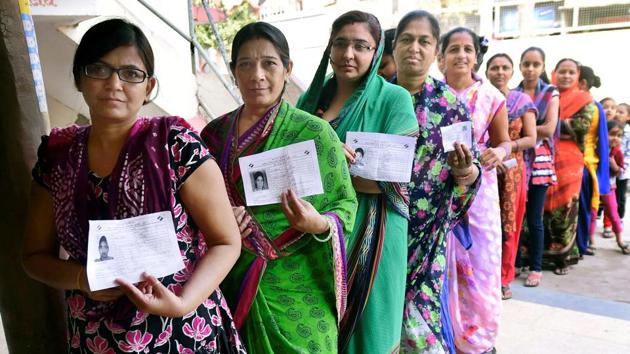Gujarat results: Trends throw up rural-urban split in voting pattern
According to data, the Congress gained about one percentage point more rural seats than the BJP in the state that has one of the highest level of indebted farm households at 43% .
Trends from the Gujarat assembly election results have thrown up a rural-urban voting divide, despite the Bharatiya Janata Party (BJP) surmounting tough challenges in a very bipolar contest with the Congress.

About 94% of the votes were split up between the incumbent BJP and its main rival, the Congress. The Congress had hoped to sweep rural areas. It did not quite do that but managed a marginal edge.
Early indicators showed how rural and urban Gujarat voted. About 98 seats in the 182-member assembly fall in rural areas.
Map | Gujarat assembly election live results 2017
According to preliminary data, the Congress gained about one percentage point more rural seats than the BJP. The BJP won or led in 54 rural assembly segments, while the Congress was firmly saddled in 67. Opposite trends held in urban seats as the Congress managed to win or was winning in only 10 urban seats, compared to the BJP’s 46.
The Congress’ largest gains came from the countryside, particularly Saurashtra, a predominantly rural belt comprising 11 districts and a third of the state’s area. In this region, the Congress won or was leading in 32 seats, compared to 27 of the BJP. This translates to a loss of 15 seats for the BJP and a gain of 13 for the Congress.
Gujarat has been in the grip of a farm crisis for much of the last five years, as droughts in 2014 and 2015 shrivelled crops in many districts, including in the drought-prone Saurashtra.
Although Gujarat is an urbanised industrial state, agriculture is the primary occupation of nearly 49% of the state’s population, comprising 3.9 million households, according to the National Sample Survey Organisation (NSSO). This shows slow movement from the farm sector to non-farm employment, which is quite the accepted path of economic development.
The state has one of the highest levels of indebted farm households at 43% despite high growth over the years. This is just two percentage points below the all-India average farm household indebtedness of 45%, according to the NSSO.
“A one-on-one correlation between an agrarian distress and rural voting, one must say, is a little exaggerated. But in Gujarat, we do have a fairly bad patch in agriculture, if not a distress,” said farm economist Yoginder Kumar Alagh.
Alagh said although many economists had criticised the NDA government’s farm loan waivers, there was a clear deterioration in farm incomes that warranted such interventions. One of the main reasons for the crisis in Gujarat’s agriculture is that the “terms of trade” have moved “decisively” against agriculture in the past four years.
Agricultural “terms of trade”, in the context of the domestic economy, refers to the ratio between the combined index of prices received by farmers in contrast to the combined index of prices paid by farmers for different items purchased. In a way, it is a measure of the difference between income and expenditure.
According to Alagh’s calculations, the terms of trade for all other sectors had gone up by about 20% in Gujarat, against a drop of about 5% in the farm sector. Despite market linkages, the surplus in Gujarat’s rural incomes is thinly spread. The monthly average income of farm households, according to the NSSO, is Rs 7,926, against an expenditure of Rs 7,672.
There are two distinct characteristics of Gujarat’s agriculture. One it is highly commercialised, and two, it operates largely in a cooperative model. “Demonetisation did affect agriculture and farmers haven’t been adequately compensated,” Ahmedabad political analyst Maheshwari Jani said.
When demonetisation was announced on November 9, 2016, the Reserve Bank of India (RBI) did not allow cooperative banks to accept the demonetised currency.
“Since Gujarat has a cooperative-based agriculture, credit for first-stage processing of food crops was certainly affected,” says Alagh.
Clearly, the decline in the BJP’s seats and dissent among farmers was not enough to have caused a major upset in terms. The Congress, on the other hand, tapped into rural votes but it did not make up for its lack of inroads in urban belts.





